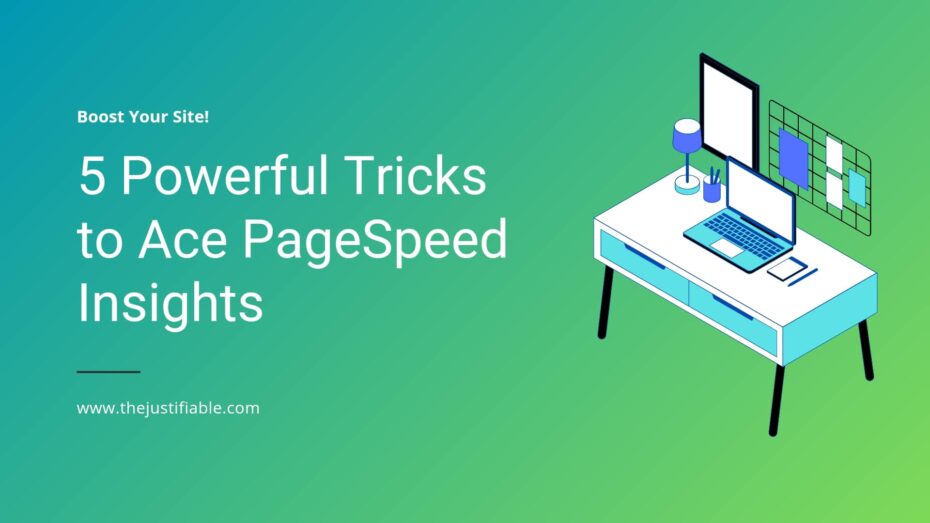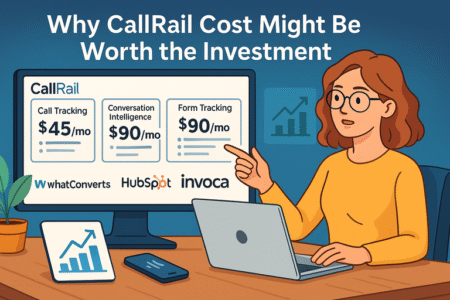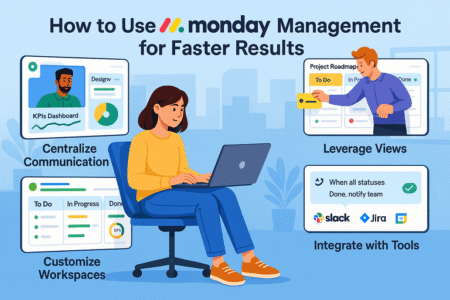Table of Contents
PageSpeed Insights is your gateway to a faster, more efficient website. It’s not just about improving load times; it’s about enhancing the overall user experience and boosting your site’s performance in search rankings. In a world where every second counts, understanding and applying the insights provided by this powerful tool can set you apart from the competition.
This guide is crafted to demystify the process, offering you five powerful tricks to ace PageSpeed Insights. Whether you’re a seasoned developer or a website owner keen on optimization, these strategies are designed to provide you with actionable steps to elevate your site’s speed and usability.
Navigating the complexities of website optimization can seem daunting, but with PageSpeed Insights, you have a reliable compass to guide your efforts. Each recommendation offered by this tool is a stepping stone towards a more responsive, engaging website. As we explore these five potent tricks, remember that the goal is not just to achieve a higher score but to create a seamless, enjoyable online experience for your visitors.
The insights you gain today will not only boost your site’s performance but also lay a solid foundation for its future growth. Join us as we embark on this journey to unlock the full potential of your website with PageSpeed Insights.
The Role of PageSpeed Insights in Website Optimization
How does PageSpeed Insights contribute to the success of your website? Why is it crucial for both your site’s user experience and its visibility in search engine results? These questions are at the heart of understanding the pivotal role this tool plays in website optimization. PageSpeed Insights is not just about speed; it’s about creating a solid foundation for your website’s performance and search engine optimization (SEO) strategy.
PageSpeed Insights analyzes your website’s content and provides suggestions to make your page load faster. This tool measures both the speed and usability of a site on various devices, offering a comprehensive look at how well your site performs. By focusing on these metrics, you’re not just improving numbers; you’re enhancing the actual experience users have on your site. This improvement directly impacts user engagement, bounce rates, and ultimately, your site’s ranking in search results.
Incorporating PageSpeed Insights into your website optimization efforts means you’re prioritizing your audience’s needs. A faster, more responsive site reduces frustration and encourages visitors to stay longer, explore more pages, and engage more deeply with your content. These positive user behaviors are signals to search engines that your site is valuable, relevant, and worthy of a higher ranking in search results.
1. Leverage Browser Caching for Speedy Load Times
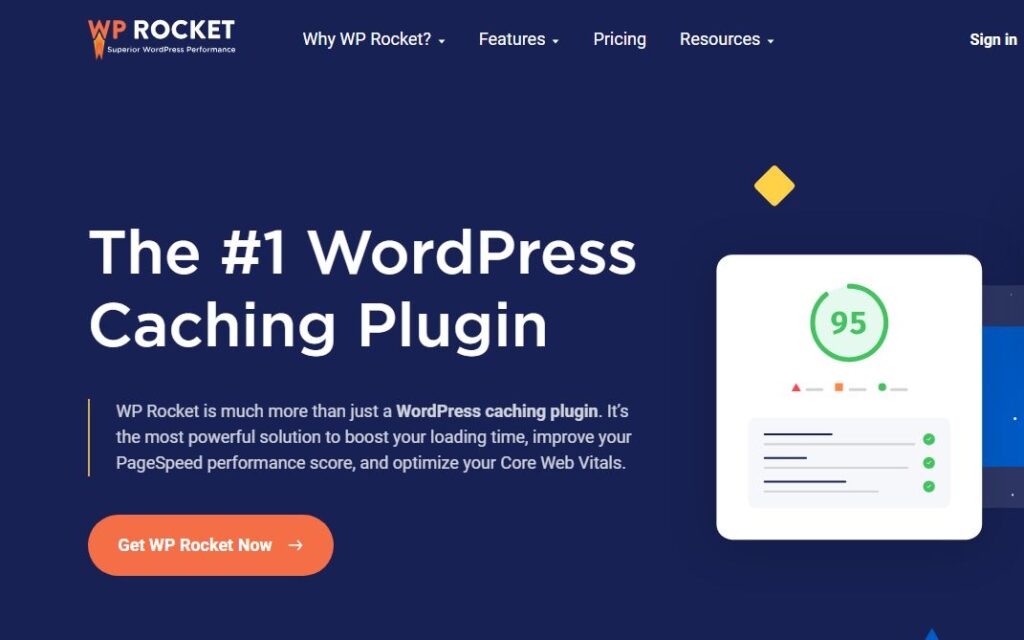
Did you know that by leveraging browser caching, you can significantly reduce the load time of your website for repeat visitors? This powerful technique involves storing parts of your site in a user’s browser on their first visit, so on subsequent visits, the browser doesn’t have to retrieve the same data from the server. This not only speeds up the experience for the user but also decreases the load on your servers.
Integrating browser caching into your website optimization strategy is essential for improving your PageSpeed Insights score. When a browser can locally store images, JavaScript files, and CSS stylesheets, it drastically cuts down on the number of HTTP requests needed for a webpage to load. This reduction in requests is a direct route to faster page speeds, contributing to a smoother, more enjoyable user experience that keeps visitors coming back.
To implement effective browser caching, you must adjust your server’s settings to specify how long browsers should hold onto certain types of content. Whether it’s a few days or a year, the right duration can make a significant difference in load times. However, it’s crucial to strike a balance; setting durations too long might mean users don’t see your latest updates when they return, while too short a time won’t offer the full benefits of caching.
Emphasizing browser caching as part of your website’s performance optimization not only enhances user satisfaction but also plays a significant role in your site’s SEO performance. Search engines prioritize sites that offer a faster, more efficient user experience, making browser caching a double win for your website. By focusing on this strategy, you’re taking a significant step towards a more responsive, engaging, and competitive online presence.
Optimize Your Caching Policy for Maximum Efficiency
Crafting an optimal caching policy is akin to setting the rhythm for your website’s performance dance. It’s about finding that sweet spot where your content is fresh to your users but doesn’t burden them with unnecessary load times. A well-defined caching policy ensures that your site’s static content, like images and stylesheets, is stored efficiently on users’ browsers, reducing the need for repeated downloads.
Optimizing your caching policy starts with understanding the nature of your website’s content. Static content, which doesn’t change often, can be cached for longer periods. Dynamic content, on the other hand, requires a more nuanced approach to ensure that users are getting the most current version without sacrificing load time. By customizing cache lifetimes for different types of content, you ensure that your site remains up-to-date and fast.
The impact of an optimized caching policy extends beyond just user experience. It directly influences your website’s bandwidth usage and server load. Less data being transmitted means lower hosting costs and a smaller carbon footprint, making your site not only faster but also more environmentally friendly and cost-effective.
Moreover, the strategic implementation of a caching policy signals to search engines that your site is well-maintained and respects the user’s time. This consideration can contribute to higher rankings in search results, as search engines value fast-loading sites that provide a positive user experience. Through thoughtful caching policies, you’re not just optimizing for speed; you’re enhancing your site’s overall appeal to both users and search engines alike.
2. Optimize Images Without Sacrificing Quality
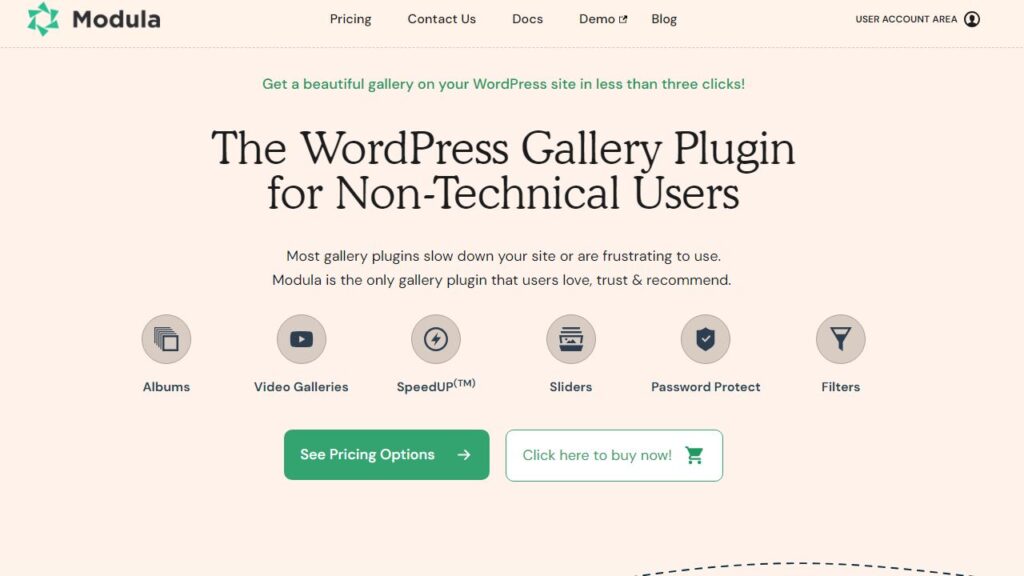
“An image is worth a thousand words, but it shouldn’t take a thousand seconds to load.” This adage underscores the delicate balance between image quality and website performance. In the realm of PageSpeed Insights, optimizing images is a critical step toward enhancing your site’s load time without compromising the visual richness that captures your audience’s attention.
Optimizing images for the web means reducing their file size as much as possible without significantly impacting visual quality. This involves choosing the right file format and compression level. Tools and plugins are available to automate this process, ensuring that images are web-ready the moment they’re uploaded. This strategy not only improves your PageSpeed Insights score but also contributes to a smoother, faster user experience, encouraging longer visits and deeper engagement with your content.
Another aspect of image optimization involves responsive images. Serving different image sizes for different devices ensures that a smartphone isn’t loading a large desktop-sized image. Implementing this can significantly reduce unnecessary data usage and improve loading times, particularly on mobile devices where speed is even more critical. This approach aligns with PageSpeed Insights’ emphasis on optimizing for mobile to enhance overall performance and user satisfaction.
The Magic of Next-Gen Formats: WebP and AVIF
“Innovation in image formats is like a fresh breeze for web performance.” This statement highlights the transformative impact of next-generation image formats like WebP and AVIF on website optimization. These formats offer superior compression and quality characteristics compared to traditional formats such as JPEG and PNG, allowing for faster page loads without sacrificing the visual quality of your images.
WebP, developed by Google, provides lossless and lossy compression for images on the web. Using WebP, webmasters can create smaller, richer images that make the web faster. The adoption of WebP has shown significant improvements in loading times and PageSpeed Insights scores, as it can reduce image file sizes by more than 30% compared to JPEG and PNG, without noticeable loss in quality.
AVIF, standing for AV1 Image File Format, is a newer format that takes image compression to the next level. It offers even better compression than WebP and is supported by major browsers, making it an excellent choice for cutting-edge web optimization. The use of AVIF can lead to an additional reduction in image size, further enhancing your website’s performance and user experience.
Adopting these next-gen formats is a forward-thinking strategy for any website aiming to improve its PageSpeed Insights score and, more importantly, its overall user experience. While the transition might require some initial setup and adjustment, the payoff in terms of speed and efficiency is well worth the effort.
3. Minimize JavaScript and CSS Files for a Sleeker Site
Just as a streamlined car cuts through the air with less resistance, a website with minimized JavaScript and CSS files slices through the digital ether more swiftly. This comparison highlights the importance of reducing the size and number of these files to enhance your site’s performance. PageSpeed Insights places a significant emphasis on this optimization, recognizing its impact on loading times and overall user experience.
Minimizing your JavaScript and CSS files involves removing unnecessary characters, such as spaces, line breaks, and comments, without changing the functionality of the code. This process, known as minification, can significantly reduce file sizes, making your website faster to load. Tools and plugins can automate this task, ensuring that your site remains as efficient as possible with minimal effort.
Beyond minification, combining files can further optimize your site’s performance. By consolidating multiple JavaScript or CSS files into fewer, larger files, you reduce the number of HTTP requests that a browser needs to make. This is particularly important for improving the PageSpeed Insights score, as each request adds to the total loading time of a page.
Implementing these strategies not only contributes to a sleeker, faster-loading website but also improves its ranking on search engine results pages (SERPs). Search engines prioritize sites that offer an excellent user experience, and speed is a crucial factor.
Prioritize Above-the-Fold Content with Critical CSS
In the realm of web performance, the speed at which a page displays its above-the-fold content can be likened to the first impression in a conversation. It sets the tone for the user’s experience. Prioritizing this content through the use of Critical CSS is a strategy endorsed by PageSpeed Insights, aimed at enhancing the perceived speed of your site by ensuring that the content visible to users upon arrival loads as quickly as possible.
Critical CSS involves identifying and inline-loading the CSS necessary to render the above-the-fold content, thus reducing the time it takes for this content to become visible. This technique ensures that the most important visual elements of your page are prioritized, without waiting for the entire CSS file to load. Implementing Critical CSS can significantly improve your site’s load time, directly impacting user satisfaction and engagement from the moment they land on your page.
While the implementation of Critical CSS requires an understanding of your site’s design and structure, the benefits it brings to page speed and user experience are well worth the effort. Tools and automated processes can help identify the critical CSS for your pages, making this optimization more accessible. By focusing on this crucial part of your site’s performance, you’re taking a proactive step toward a faster, more responsive website.
Moreover, adopting Critical CSS aligns with the best practices for mobile optimization, where speed and efficiency are even more critical due to network variability. This approach not only improves your PageSpeed Insights score but also contributes to a stronger SEO position.
4. Utilize a Content Delivery Network (CDN) to Reduce Latency
While it’s true that having a high-quality hosting service is crucial for website performance, leveraging a Content Delivery Network (CDN) can take your site’s speed and user experience to the next level. CDNs are designed to minimize latency, the delay before a transfer of data begins following an instruction for its transfer, by caching content in multiple locations around the world. This ensures that regardless of where your users are, they’re accessing your content from a server that’s geographically closest to them.
Incorporating a CDN into your website’s infrastructure means that your static content (such as images, CSS, and JavaScript files) is stored on a network of servers worldwide. When a user visits your site, the CDN delivers this content from the server nearest to them. This significantly reduces the time it takes for your pages to load, improving your site’s overall performance and, by extension, your PageSpeed Insights score. It’s a straightforward yet effective way to enhance your website’s user experience.
Moreover, using a CDN can help handle traffic spikes more efficiently. Instead of all requests hitting your server, they are distributed across the CDN’s network, reducing the burden on your hosting infrastructure. This not only ensures your site remains stable and responsive during peak traffic periods but also improves its resilience against DDoS attacks, making your site more secure.
Furthermore, a CDN can positively impact your SEO efforts. Search engines consider page load time as a ranking factor, and a faster website offers a better user experience, which search engines value highly.
Selecting the Right CDN for Your Website’s Needs
Choosing the right Content Delivery Network (CDN) is akin to selecting a strategic partner for your online presence. It’s not just about speed; it’s about finding a CDN that aligns with your website’s specific requirements, audience, and future growth plans. Each CDN has its unique strengths, from geographic reach to customization options, and understanding these can help you make an informed decision.
Firstly, consider the geographic distribution of your audience. If your visitors are concentrated in specific areas, look for a CDN with strong server presence in those regions. This ensures that your content is delivered as quickly as possible to your primary audience. Additionally, evaluate the CDN’s performance in terms of speed and reliability, as these are critical for enhancing user experience and your PageSpeed Insights score.
Another crucial factor is the ease of integration with your existing website infrastructure. The right CDN should seamlessly work with your site’s platform and not require extensive modifications to be effective. Look for CDNs that offer straightforward setup processes and robust support, as this can significantly reduce the time and effort involved in getting started.
Lastly, consider the cost and scalability of the CDN service. It’s important to choose a CDN that fits your budget while also offering the flexibility to scale as your website grows. Some CDNs offer pay-as-you-go pricing models, which can be advantageous for sites with fluctuating traffic. Additionally, ensure that the CDN provides detailed analytics, as these insights can be invaluable for monitoring performance and making data-driven decisions to further optimize your site.
5. Enable Lazy Loading for Off-Screen Images
It might come as a surprise to learn that a significant portion of your website’s loading time is spent on loading images that the user hasn’t even scrolled to yet. This is where enabling lazy loading for off-screen images can dramatically improve your site’s performance and your PageSpeed Insights score. Lazy loading is a strategy that loads images and other media only when they’re about to enter the viewport, significantly reducing initial page load times, decreasing bandwidth usage, and enhancing the user experience.
Implementing lazy loading means that instead of the traditional method where all images on a page are loaded simultaneously, regardless of whether they are visible to the user, images are loaded dynamically as the user scrolls. This not only speeds up the initial page load time but also conserves data for users on limited data plans. This approach aligns perfectly with the principles of PageSpeed Insights, focusing on both speed and efficiency to improve overall site performance.
From a technical perspective, lazy loading can be implemented using JavaScript or by taking advantage of native lazy loading attributes in modern browsers. This flexibility means that virtually any website can adopt lazy loading, regardless of its underlying technology. By prioritizing resources in this way, you’re ensuring that your site remains responsive and agile, catering to the immediate needs of your users without overwhelming their browsers or your servers.
Implementing Lazy Loading: A Practical How-To Guide
Integrating lazy loading into your website might seem like a daunting task, but with a step-by-step approach, it’s quite manageable and highly beneficial for your site’s performance. The first step involves identifying the images and media that can benefit from lazy loading. Typically, these are the non-critical, off-screen images that do not need to be displayed immediately when a page loads.
Once you’ve identified these images, the next step is to implement lazy loading. For websites that rely on custom JavaScript, various libraries can help simplify this process. Alternatively, for sites built with modern web development frameworks or content management systems, there are often plugins or built-in features that enable lazy loading with minimal effort.
The implementation process requires modifying your site’s HTML and possibly its JavaScript. For HTML, it involves adding a “loading” attribute with the value “lazy” to your <img> tags. This instructs the browser to defer loading these images until they’re about to enter the viewport. For a more customized approach, especially for background images or for more complex scenarios, JavaScript-based solutions provide greater control over the lazy loading behavior.
Finally, testing is crucial. Once lazy loading is implemented, it’s important to test your website across different browsers and devices to ensure that images load correctly and that the user experience is not negatively impacted. Tools like PageSpeed Insights can be invaluable here, providing insights into how your lazy loading implementation affects overall site performance.
Reap the Rewards of a Faster Site with These PageSpeed Insights Tricks
Mastering the art of website optimization is a journey, not a destination. The strategies we’ve explored, from leveraging browser caching to enabling lazy loading for off-screen images, are your roadmap to success in the fast-paced world of the internet. PageSpeed Insights is more than just a tool; it’s a compass that guides you through the complex terrain of web performance, ensuring that your site not only meets but exceeds the expectations of today’s sophisticated users.
Implementing these powerful tricks will not only boost your PageSpeed Insights score but also enhance the overall user experience. A faster site reduces bounce rates, increases engagement, and, most importantly, improves your site’s visibility in search engine rankings. These benefits are interconnected, each contributing to the ultimate goal of building a successful online presence. Remember, the speed of your website is a reflection of your commitment to providing value to your visitors.
Furthermore, the journey towards a high-performing website is ongoing. Technologies evolve, user expectations change, and new optimization techniques emerge. Staying informed and ready to adapt is crucial. Regularly reviewing your PageSpeed Insights performance, keeping abreast of the latest web development best practices, and being proactive in implementing changes will ensure that your site remains at the forefront of digital excellence.
In closing, let these strategies be your guide, but also let your creativity and innovation lead the way. The most successful websites are those that not only follow best practices but also provide unique, valuable content that resonates with their audience. Combine the technical optimization techniques with a clear, compelling message and high-quality content, and you’ll create a website that not only loads quickly but also leaves a lasting impression on your visitors.
Frequently Asked Questions (FAQ)
What is PageSpeed Insights, and why does it matter for my website?
PageSpeed Insights is a tool from Google that analyzes your website’s content and performance, providing suggestions to improve load times and user experience. A faster site improves your search engine ranking and reduces bounce rates, leading to better overall engagement and conversions.
How can I improve my website’s PageSpeed Insights score?
You can improve your score by optimizing images, minimizing JavaScript and CSS, leveraging browser caching, using a Content Delivery Network (CDN), and enabling lazy loading for images. These techniques reduce load times and enhance user experience.
What is browser caching, and how does it help with page speed?
Browser caching stores parts of your website in a user’s browser, so when they revisit, the browser doesn’t need to reload the entire page. This significantly speeds up the user experience for repeat visitors.
How do I optimize images for better PageSpeed Insights results?
To optimize images, use formats like WebP or AVIF, compress images without losing quality, and implement responsive images that load appropriate sizes for different devices. This reduces file sizes and improves loading times.
Why should I minimize JavaScript and CSS files on my website?
Minimizing JavaScript and CSS files reduces their size by removing unnecessary characters, leading to faster page load times. This practice directly improves your PageSpeed Insights score and overall site performance.
What is a Content Delivery Network (CDN), and how does it affect page speed?
A CDN caches your website’s content on servers worldwide, delivering it from the server closest to the user. This reduces latency, resulting in faster load times and a better user experience, particularly for global audiences.
How does lazy loading improve my site’s performance?
Lazy loading defers the loading of off-screen images until the user scrolls to them. This technique reduces the initial load time, saves bandwidth, and improves the overall performance of your site, especially on mobile devices.
Can improving PageSpeed Insights scores really impact my SEO?
Yes, search engines like Google consider site speed a ranking factor. A higher PageSpeed Insights score can lead to better rankings in search results, driving more traffic to your site.
What are the best practices for leveraging browser caching?
Set caching durations based on content type; static content like images can be cached longer, while dynamic content should have shorter caching periods. Adjust your server settings to balance between fresh content and fast loading.
How do I choose the right CDN for my website?
Choose a CDN based on your audience’s geographic location, your budget, and the CDN’s integration with your existing website infrastructure. Consider performance, ease of setup, and scalability when making your choice.


